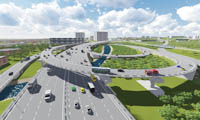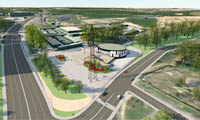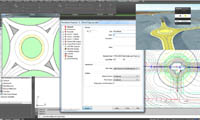AutoCAD Civil 3D
 Overview:
Overview:
AutoCAD Civil 3D is an enhanced civil engineering design and construction documentation software solution that supports Building Information Modelling (BIM).
It is developed by Autodesk. It is mainly used by civil engineers for designing projects, drafting & documenting, defining workflows, analyzing, surveying & mapping.
 Why to learn?
Why to learn?
AutoCAD Civil 3D is a software program that is used by professionals to design better civil infrastructure, understand project performance in a better way, maintain more consistent data & processes, and responds fast to any change.
It supports Building Information Modeling (BIM) methods and reduces the time for designing, analyzing, and implementing changes.
 Learning Objectives:
Learning Objectives:
CADD Center will help you to ace the associated features of AutoCAD Civil 3D:
- Design: For bridge modeling, pressure pipe networks, corridor design, gravity pipe networks, parcel design, grading, geotechnical modeling, and rail track layout.
- Analysis: For complicated mapping & analysis functionality, storm water management using dynamic model, dynamic QTO & earthwork calculations, and transformation of civil design models with visualization.
- Drafting & Documentation: For drafting standards, map production, construction documentation, and for reports & tables.
- Surveying & Mapping: For surface modeling, creation of a base map, and reality capture.
 Learning Outcome:
Learning Outcome:
- Student will know to evaluate various what-if scenarios and optimize project performance, automate time-consuming tasks to streamline project workflows.
- Student will learn how to create corridor model using streamlined workflow and gain mastery over tools for pressure network creation, sanitary & storm drainage systems, terrains models for grading, automated parcel layout tools.
- Student will know to use tools for streamline mapping and surveying workflows, dynamic surface creation, and use point clouds to digitize as-built features.
- Student will learn to use an wide-ranging library of CAD drafting styles, generate annotated production plans, use cartographic mapping functionality, and use dynamic tables for linework.
- Student will know how to do storm and sanitary analysis, geospatial analysis, and river analysis.
 Overview:
Overview:


 Why to learn?
Why to learn? Learning Objectives:
Learning Objectives: Learning Outcome:
Learning Outcome: